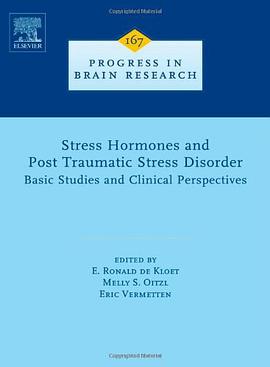

具体描述
This book is written by an experienced psychologist specialising in the development of infants and young adults and aims to help practitioners to achieve accurate results and reach conclusions best suited to the particular needs of the child under assessment.The book is divided into 3 sections, with the first being an exploration of the nature of mental development. It discusses different theoretical perspectives of mental measurement, including the history of mental measurement, concept of the mind and psychology of communication. Key theoretical issues that are prerequisites for an effective assessment are highlighted. Useful examples based on day-to-day practice are quoted, e.g. reasons that should be considered when a child is uncooperative during tests.The second section is a guide to psychometrics. It includes the explanation of the essential statistics required to interpret test scores, specific information regarding the nature and function of measurements, the normal distribution curve and its relation to IQ values. There is also a chapter specifically introducing and comparing different tests of mental development. The last section focuses on the skills needed by practitioners for effective assessment of young children. The author explains how the very presence of the assessor has an impact on the assessment process both in terms of perceptual idiosyncrasies and in terms of the effectiveness with which the interpersonal dynamics between child, carer and assessor are managed.'I found the last section of the book the most relevant and useful for professionals working with children. During assessment, all measurements are liable to errors and when these involve infants and children, errors are almost unavoidable. This is because their skills are not established and their attempts to display them are often of experimental nature. In the individual testing situation, both assessor and child are in a learning situation and liable to trial-and-error strategies. In this section common real-life examples depicted common pitfalls faced by inexperienced and even experienced practitioners, including the physical setting of interview, inadequate social skills to engage clients, parental influence on the child's behaviour during interview, and faulty recording of observations.The author gives useful suggestions on how to properly engage the young child without being overly solicitous or enthusiastic by effectively using particular words and phrases. The author also gives clear instructions when illustrating the proper Griffith Mental Development Scales, the Bayley Scales of Infant Development, and the Weschler Pre-school and Primary Scale of Intelligence etc. At the end of the chapter, the key points for maintaining the flow of the test session are succinctly presented, including tips on what to do with an inattentive child. Her advice on how to be sensitive to the affective state of the child and to create a positive mood during the test is a very timely reminder during this era of duty overloading and lengthy work-hours.We often try to finish testing as if we are fast forwarding a video, which makes our clients uneasy and therefore more likely to produce errors. At the beginning of the book the author tries to offer an overview of the complex nature of human mental development, including the evolutionary view on the concept of the mind, the soul and thought and the two 'faces' of psychology. Although what she has discussed is very interesting, it seems rather irrelevant to the rest of the book. This philosophical approach also makes it hard for readers to grasp the key messages the author is trying to convey.In the last 2 chapters the important issues in observation are mentioned especially to enable practitioners to avoid common pitfalls during assessment and provide the techniques needed for improving observation skills. Unfortunately, this advice is too general for professionals: the author often uses poems and examples from literature to illustrate the key areas of development, e.g. language, memory, mobility, speech, touch, and the child as a whole. Although this approach does make it more interesting to read, it also makes it too abstract to be understood.I particularly appreciate the real-case vignettes cited at the end of the book. They show us how the interaction between the child, the caregiver and the assessor can influence the assessment process and also add a personal touch to the book. I recommend this book to professionals working in the testing field, particularly the beginners. It offers a general and holistic guide to skilled observation, accurate interpretation and effective reporting, which equips the reader with the tools to derive accurate conclusions in the best interests of the child under assessment' - Dr Flora YM Mo, Medical Officer, Department of Psychiatry, New Territories East Cluster, Hong Kong, China.
作者简介
目录信息
读后感
评分
评分
评分
评分
用户评价
相关图书
本站所有内容均为互联网搜索引擎提供的公开搜索信息,本站不存储任何数据与内容,任何内容与数据均与本站无关,如有需要请联系相关搜索引擎包括但不限于百度,google,bing,sogou 等
© 2026 onlinetoolsland.com All Rights Reserved. 本本书屋 版权所有




















